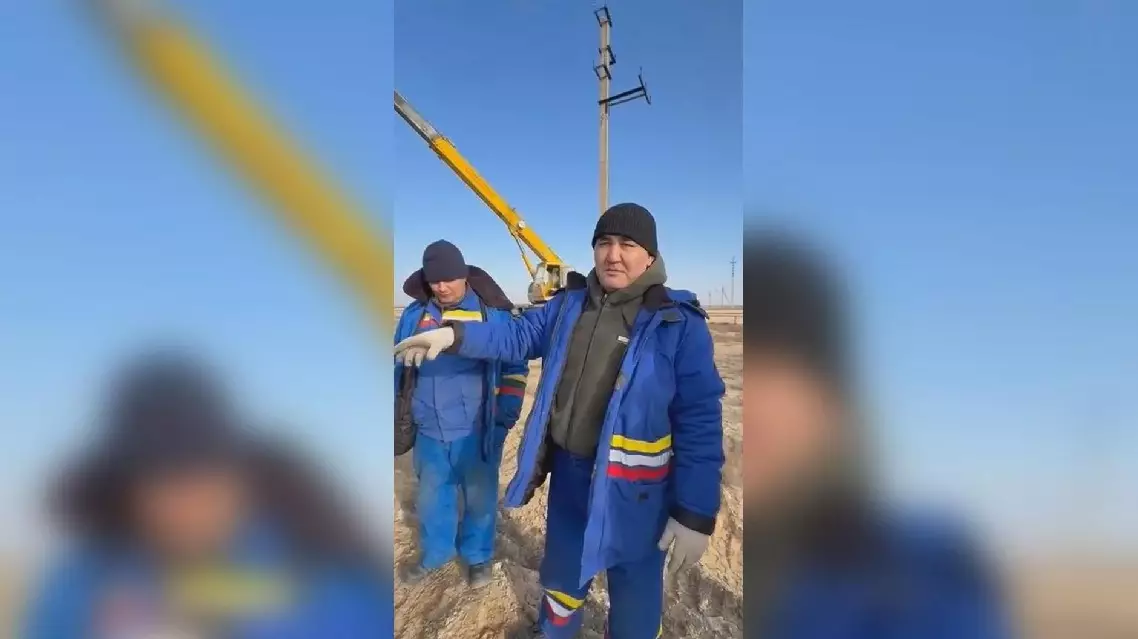Twenty-nine survivors were found in the passenger plane crash in Aktau, Kazakhstan on Wednesday, Kazakhstan's Ministry of Emergency Situations (MES) reported.
An Embraer 190 aircraft operated by Azerbaijan Airlines with flight number J2-8243 from Baku to Grozny crashed near Aktau Airport on Wednesday with a total of 67 people on board.
According to the MES, 482 people are involved in the rescue on site, as well as 97 pieces of equipment, two aircraft and four teams of search and rescue dogs.
A group of electric power workers near the crash site were among the first batch of rescuers, who said they helped save around 15 people at the scene.
"We saw the plane crash with our own eyes and quickly packed up to head to the scene for rescue. Later, personnel from the Ministry of Emergency Situations and hospital staff members arrived. About 10 of us went there. We brought a crane to help rescue people from the cabin," a rescuer said.
The emergency departments of Kazakhstan, Russia and Azerbaijan exchanged information via video conference.
According to Subkhonkul Rakhimov, a survivor of the crash, the plane suddenly rose rapidly and began to increase its altitude when it was about to land in Grozny. There was heavy fog at the time, and the crew tried to land the plane in Grozny three times, but all failed. An explosion occurred during the third attempt to land.

29 survivors rescued from plane crash in Kazakhstan

29 survivors rescued from plane crash in Kazakhstan
A contemporary Chinese art exhibition has been held at the Hungarian National Museum in Budapest, playing a vibrant role in fostering cultural ties between the East and the West. The exhibits, including brush paintings and sculptures on mountains, rivers, plants, blend traditional brushwork with Western influences, creating a serene, meditative atmosphere.
The artists' deep connection with the natural world is a window that the "Chinese Xieyi exhibition'' at the Hungarian National Museum presents to the public to explore Chinese philosophy, according to Tunde FegyvAri-Komori, curator of the Hungarian National Museum.
"This exhibition is a collection of 58 artworks, including four sculptures from 58 different artists, from the National Art Museum of China's collection. And they represent modern and contemporary artworks, partly reflecting back to the traditional Chinese painting and Chinese art, and partly reflecting to Western influences in art, which mostly started arriving in China after the 1970s and the 80s," said FegyvAri-Komori.
Much of the exhibition showcases traditional Chinese brushwork, where delicate strokes create intricate designs and meanings that express deep philosophical meanings, allowing viewers to experience the world from their perspective.
"The Chinese curators constructed the exhibition around these three topics and these three main aspects to approach Xieyi itself. The first one is called 'yi', which translates as meaning. This focuses on the essence of the topic. The second one is form, which in Chinese is 'xing,' and it's quite similar to meaning, but from a different approach. They are focusing on the form itself that they see, but they are not aiming at mirroring reality. The third one is called 'interest,' or in Chinese called 'qu.' And in this last part, I would say that it's a combination of the first two," said FegyvAri-Komori.
One standout piece is a sculpture that blends mythology and modern art, depicting Lao Tzu departing from the Qin Empire (221 BC to 207 BC), carrying the wisdom that shaped Taoist thought with him. The ox-head panther he rides symbolizes mysticism and the spiritual journey, adding another mythical dimension to the work.
"It expresses Xieyi very well, but at the same time, it also expresses a little bit of Western modern art, abstract art," said FegyvAri-Komori.
For many visitors, the exhibition is a chance to experience the dynamic evolution of Chinese art.
"My father had several books about Chinese art, about porcelains, ceramics, and paintings. It always struck me how different it is from our European tradition. There's a subtlety and sensitivity in it. The way they express emotions feels so unique and profound," said Daniel, a visitor.
The exhibition, part of celebrations of the 75th anniversary of the establishment of diplomatic relations between Hungary and China, celebrates cultural exchange and shared appreciation for art and culture.

Contemporary Chinese art expo held in Hungary helps cultivate ties between east and west











